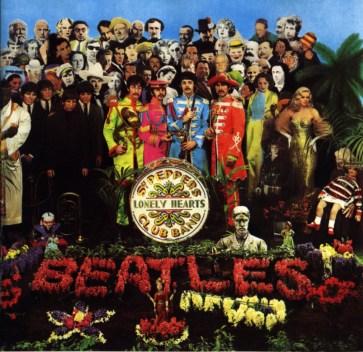On this day in the 1967 the British band The Beatles released their iconic album ‘Sgt. Pepper’s Lonely Hearts Club Band’. Their eighth album, Sgt. Pepper was an experimental piece as one of the world’s first concept albums, and represented a marked break from the Beatles’ earlier work. The concept of the album came from bassist Paul McCartney and is that the album is being performed by a fictional band – the titular ‘Sgt. Pepper’s Lonely Hearts Club Band’. Each Beatle took on a new persona in the band, most prominently drummer Ringo Starr as Billy Shears.

The picture of the band in the album (from left: Ringo Starr, John Lennon, Paul McCartney and George Harrison)
Having decided to stop touring in 1966, the band were freer to write songs that would be difficult to play live, including the famous ‘A Day In The Life’. Other songs on the album have acquired equally legendary status, including ‘With a Little Help from My Friends’, ‘Lucy in the Sky with Diamonds’ and ‘When I’m Sixty-Four’. The album cover was designed by artists Peter Blake and Jann Haworth based on a sketch by McCartney, and featured cut-outs of famous figures. The figures depicted include Bob Dylan, Edgar Allan Poe, Marilyn Monroe, Robert Peel, Stuart Sutcliffe, Laurel and Hardy, Karl Marx, Oscar Wilde and wax versions of the Beatles themselves; John Lennon was denied his request to feature Adolf Hitler and Jesus Christ. This article gives a great account of the reasoning behind some of the choices and includes a handy chart to help identity the figures behind the band. Sgt. Pepper was an instant success, spending 22 weeks at the top of the UK album chart and winning four Grammy Awards; it is still considered one of the band’s best albums and one of the greatest albums of all time.

Outtakes from Sgt. Pepper cover shoot (source, and for more of the alternate covers: http://www.thatericalper.com/2014/02/24/outtakes-from-the-beatles-sgt-pepper-cover-shoot/)






















